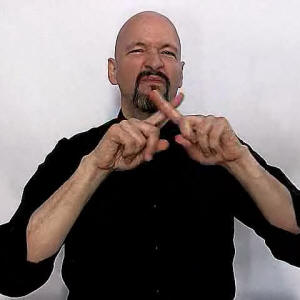

In sum, there is evidence that facial expressions mean things ranging from possibly universal messages, i.e., “I am surprised”/“Something happened!” to culture specific learned meanings i.e., “hello,” to culture specific meanings that can take part in larger composite structures with other meaningful elements, i.e., the conditional clause marker in sign languages. These facial expressions are clearly communicative in nature and they are used in combination with other meaningful movements (those of the hands).

The past 30 years of linguistic research on sign languages have revealed that there are facial expressions which are used together with manual signs and function as phonological features, morphemes, and syntactic/prosodic markers, for example brow raising marking conditional clauses ( Liddell, 1980 Dachkovsky and Sandler, 2009). That is, raised eyebrows do not mean “I am surprised,” but might mean “Something happened I am going to find out what.” From this view all facial expressions evolved for communicative purposes.

However, Fridlund (1997) claimed that there are no “read outs” of inner emotional states rather, what are usually regarded as emotional expressions evolved to communicate intentions. According to this view, some facial expressions are “read outs” of inner emotional states and the fact that they have a meaning to the observer is incidental, while others are used specifically for communication and are thus in some sense intentionally meaningful. Examples of the latter type are (a) an eyebrow flash used to mean “hello,” (b) eyebrow movements during speech that emphasize certain words. Following this tradition Ekman (1979, 1992) claimed that there is a set of facial expressions that are innate, and they mean that the person making that face is experiencing an emotion i.e., brow raising means “I feel surprised.” He also claimed that there are culturally acquired facial expressions used to modulate the innate emotional expressions, so-called display rules, and also others that are used for communication. Even though their instrumental function may have been lost, the facial expression remains in humans as part of our biological endowment and therefore we still lift our eyebrows when something surprising happens in the environment whether seeing more is of any value or not. For example, lifting the eyebrows might have helped our ancestors respond to unexpected environmental events by widening the visual field and therefore enabling them to see more. Humans perceive facial expressions as conveying meaning, but where do they come from and what exactly do they mean? Based on observations of facial expressions typically associated with emotions Darwin (1904) hypothesized that they must have had some instrumental purpose in evolutionary history.


 0 kommentar(er)
0 kommentar(er)
